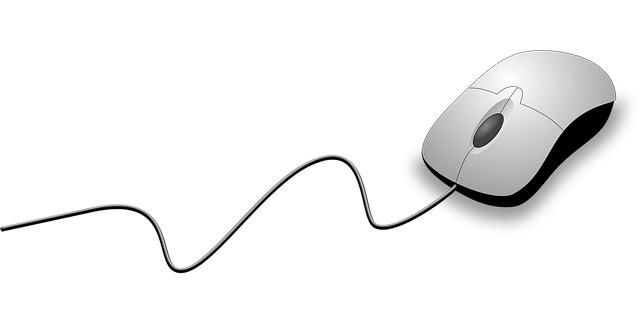In today's digital landscape, effective design relies on understanding user needs through diagnostic tools like usability testing platforms and survey software. These tools guide developers in creating inclusive interfaces for diverse users, including those with visual impairments, motor disabilities, or cognitive differences. By selecting the right tools early on, developers avoid accessibility barriers and enhance user experience. Intuitive visuals and straightforward navigation further simplify access to critical information, benefiting dynamic environments. User engagement is fostered through feedback mechanisms and interactive diagnostic tools, ensuring continuous platform improvement and relevance.
In today’s digital landscape, creating user-friendly interfaces is paramount for ensuring positive user experiences. This comprehensive guide explores essential design principles aimed at fostering inclusivity and accessibility for all users, regardless of their technical expertise or abilities. From understanding fundamental user needs to implementing intuitive visuals and feedback mechanisms, discover how simple navigation enhances engagement. Learn which diagnostic tools can help you optimize your interface, making it not just usable, but enjoyable for everyone.
- Understanding User Needs: A Foundation for Design
- Accessibility Principles: Making Interfaces Inclusive
- Simple Navigation: Enhancing User Experience
- Intuitive Visuals: Uncomplicated Data Interpretation
- Feedback Mechanisms: Encouraging User Engagement
Understanding User Needs: A Foundation for Design

In today’s digital landscape, understanding user needs is more than just a desirable practice; it’s a foundational step for successful design. By employing select diagnostic tools, designers can gain invaluable insights into how users interact with various interfaces. These tools range from usability testing platforms that record and analyze user behavior to survey software capable of gauging user satisfaction and pain points. For example, rapid antigen detection systems in the medical field have paved the way for swift, accurate diagnoses, mirroring the need for quick and intuitive user experiences in digital design.
Similarly, ophthalmic diagnostic instruments highlight the importance of precision and clarity in interface design. Users, especially those with visual impairments, rely on interfaces to be straightforward and accessible. Incorporating feedback from these tools ensures that designs cater to a broader spectrum of users, making them more inclusive and user-friendly. Ultimately, prioritizing user needs through strategic use of diagnostic tools is key to creating interfaces that resonate with all users, regardless of their background or expertise.
Accessibility Principles: Making Interfaces Inclusive

In creating a user-friendly interface for all, adhering to accessibility principles is non-negotiable. This involves ensuring that digital products are inclusive, catering to users with diverse abilities and needs. One key aspect is selecting diagnostic tools that support accessibility features such as screen readers, keyboard navigation, and high-contrast modes. These tools play a vital role in making interfaces usable for individuals with visual impairments, motor disabilities, or cognitive differences.
By integrating these accessibility considerations from the outset, developers can avoid issues that may arise later in the development cycle. Utilizing diagnostic tools like pulmonary function testers and renal monitoring systems (for relevant health-related interfaces) allows for early identification of potential barriers. Similarly, gastrointestinal diagnostic tools can aid in creating interfaces that accommodate users with specific sensory or motor impairments. This proactive approach not only enhances user experience but also ensures compliance with accessibility standards and regulations.
Simple Navigation: Enhancing User Experience

A user-friendly interface should provide simple navigation, making it easy for users to find what they need. This is crucial in enhancing the overall user experience, especially in dynamic environments where time is precious. By streamlining navigation, users can quickly access critical information and tools, such as selecting diagnostic tools for various purposes, whether in healthcare or food safety labs.
For instance, in healthcare settings, efficient navigation enables healthcare professionals to swiftly locate portable clinical analysis instruments or ophthalmic diagnostic equipment, ensuring swift patient care. Similarly, in food safety diagnostic labs, a well-organized interface allows technicians to readily access the necessary tools for accurate and prompt testing.
Intuitive Visuals: Uncomplicated Data Interpretation

Intuitive visuals play a pivotal role in crafting user-friendly interfaces, especially when it comes to simplifying data interpretation for all users. By employing clean and uncluttered design principles, developers can ensure that critical information is presented in a manner that’s easily comprehensible. This is particularly important in the healthcare sector, where medical professionals rely on diagnostic tools like medical image analysis software and point-of-care testing solutions to make swift and accurate decisions.
Effective use of color, typography, and layout can guide users through complex data sets, enabling them to select relevant diagnostic tools effortlessly. For instance, employing contrasting colors for different sections or data points makes it easier to identify and differentiate between various elements, reducing the cognitive load on the user. Such intuitive visuals not only enhance usability but also foster a sense of confidence among users, ensuring they can navigate through the interface without any hindrance.
Feedback Mechanisms: Encouraging User Engagement

Encouraging user engagement is a key aspect of creating a truly user-friendly interface for all. One effective strategy is to integrate robust feedback mechanisms that allow users to share their experiences and provide suggestions. This can include simple rating systems, detailed comments sections, or even interactive surveys tailored to specific features. By collecting this data, developers can gain valuable insights into what works well and where improvements are needed, fostering a continuous improvement cycle.
Additionally, leveraging select diagnostic tools like oncology diagnostic aids, online health assessment platforms, and miniature medical sensors can significantly enhance user engagement. These tools not only provide users with accurate and personalized information but also offer opportunities for interactive feedback loops. For instance, an online health assessment platform might prompt users to share their results and experiences, helping refine the tool’s algorithms over time. Such active involvement keeps users invested in the platform’s development and ensures that it remains relevant and effective.
A user-friendly interface that caters to all is not just a goal, but an essential for modern digital experiences. By understanding user needs, adhering to accessibility principles, simplifying navigation, employing intuitive visuals, and incorporating feedback mechanisms, designers can create inclusive environments that enhance engagement. Utilizing select diagnostic tools throughout the design process ensures these elements are effectively implemented, ultimately fostering a seamless and enjoyable user experience for everyone.
